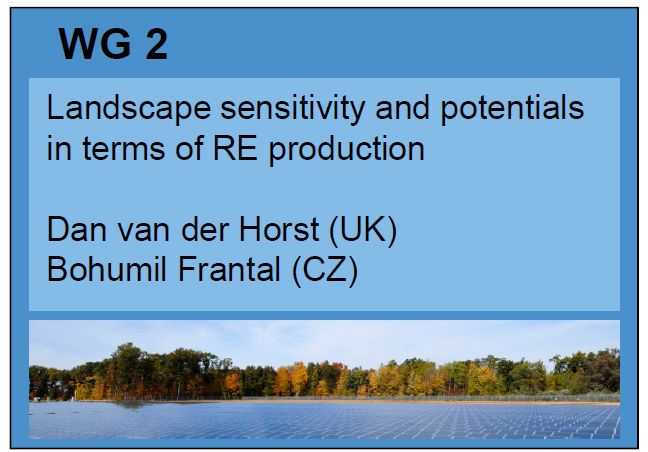
Gerald Leindecker


Low carbon environment
Life cycle analysis
Quality of environment
Energy and relation to build environment

Call for participation
WG2 had designed a questionnaire on the assessment of the compatibility of specific landscape functions and landscape types with specific renewable energy systems. Participation was open to everybody. Here you find the questionnaire as pdf-, word- and excel-file.
All members had been asked to distribute the questionnaire as best as possible, using different dissemination channels and various target groups. The aim was to receive at least five questionnaires filled in per country, if possible by people from different disciplines (geographers, landscape architects / planners, technicians, sociologists etc.).
The questionnaire was quite a good success. Results are analysed and described in chapter 3 of the COST RELY Action book.
General information on WG 2
WG 2 assessed landscape functions/qualities and their sensitivity to/potential for specific renewable energy production systems. This analysis of potential and risk was used to produce:
(i) a typology of best practices of sustainable, landscape compatible renewable energy production systems,
(ii) guidance for assessing the potential of areas for specific renewable energy systems in terms of effects on landscape quality/character,
(iii) a catalogue of relevant criteria, indicators and respective GIS-available proxy-data for assessing the suitability of landscapes for renewable energy systems.
WG 2 began at the outset of the Action for approximately 2 years, after which a report was produced and an interactive workshop held. WG2 continued for another year, but at a lower level of activity, in order to track new developments (e.g. datasets from national agencies on landscape character or qualities) and produce dissemination products on the WG outcomes.
Objectives
Research Approach & Methods
Outcomes
The location of smart practice case studies which were analysed with in COST RELY. The map shows that the majority of the examined projects are situated in peripheral boarder areas.


